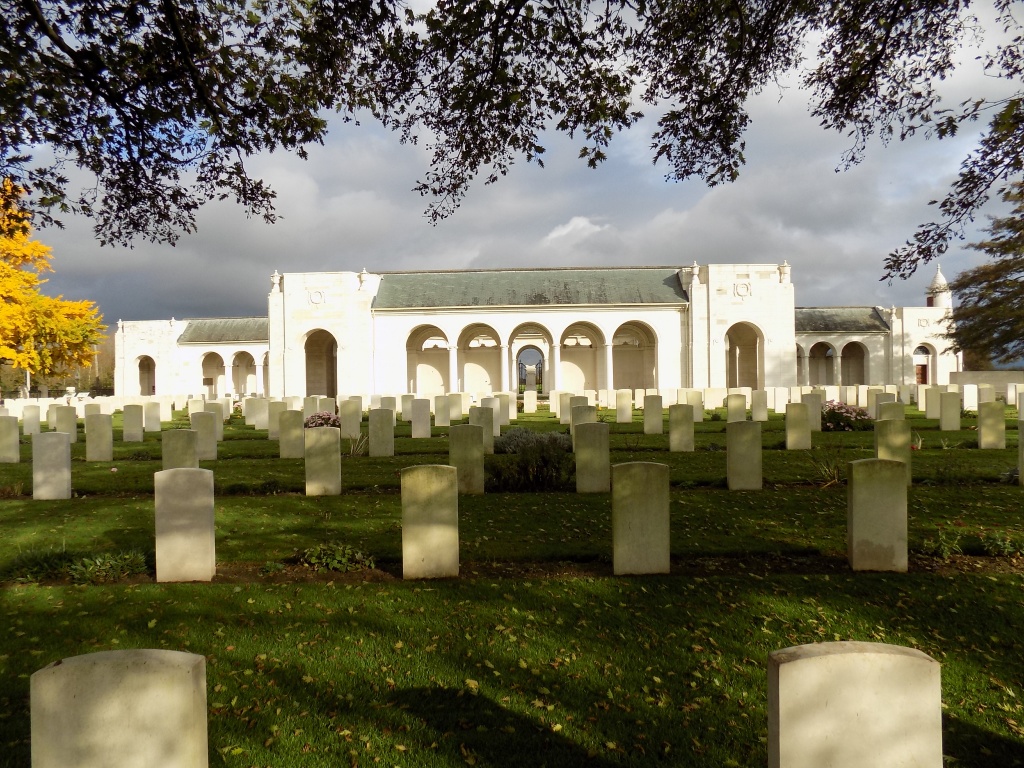- See George William Martin’s entry on the Board of Trade’s Ancestry public tree.
- This information updates the group’s previous research published on the former DTI website (now archived by the National Archives).
- Do you have any more information about George William Martin? If so the War Memorial Research Group would love to hear from you
Name recorded on Board of Trade Memorial: G. W. Martin
Born: January 1895, Clapham, London
Date of Death: 9 May 1915
Age at death: 20
Service, Regiment, Corps, etc: Seaforth Highlanders
Unit, Ship, etc: No 2 Company, 4th Battalion
Enlisted: London, 1914
Rank: Private (Service No: 2367)
Decorations: WW1 Service Medals (Victory Medal, British War Medal and 1914 Star)
War (and theatre): WW1 (France and Flanders)
Manner of Death: Killed In Action (KIA)
Family Details: Son of Henry R and Ann Martin, 43 Haselrigge Road, Clapham
Residence: Clapham
Home Department: Board of Trade – Marine Department
Civilian Rank: Temporary Second Division Clerk
Cemetery or Memorial: Le Touret Memorial, Pas de Calais (Panel 38 and 39); Board of Trade War Memorial; Scottish National War Memorial, Edinburgh
Biography:
George was born in about January 1895 in Clapham, London. His father was Henry Richard Martin (1858-1927), who was an overseer at the Post Office. His mother was Annie Robinson (1856-?). He had two sisters – Alice Ruth Martin (1880-1925) and Nellie Agnes Martin (1887-1895) and Walter Henry Martin (1893-?).
In both the 1901 and 1911 censuses, the Martin family are living at 43 Haselrigge Road, Clapham, London. By 1911, George is aged 16 and working as a Boy Clerk for the Civil Service in the Patents Office. He later worked as a Temporary Second Division Clerk in the Marine Department, also part of the Board of Trade.

George enlisted as a Private in Number 2 Company, 4th Battalion, Seaforth Highlanders. The regiment was originally created in 1881 and was part of the Territorial Force. They were part of the Seaforth and Cameron Brigade of the Highland Division and had just departed for their annual camp when WW1 started. They were immediately mobilised for full time ward service in August 1914 and sent to Bedford before travelling to France on 7 November 1914.
George died aged 20 only 6 months after first serving in France on 9 May 1915 during the Battle of Aubers Ridge (which formed part of the Anglo-French offensive known as the Second Battle of Artois).
“On 9th May 1915 the British attacked north at Arras as part of the British contribution to the Second Battle of Artois, a Franco-British offensive. Their objective was the capture of Aubers Ridge but it turned into an unmitigated disaster. The German defences had been much improved since the Battle of Neuve Chapelle in March and the British artillery was in a parlous condition and failed to destroy the German defences during the short and insufficient 40 minute bombardment that preceded the attack. Extra artillery had been requested but further to the north, the Second Battle of Ypres was being fought on a ferocious scale and none was forthcoming. The few initial gains could not be held and by the evening, all the British forces were back where they started, except of course the dead who littered the battlefield. There were 11,000 casualties for the British Army.
The 1st 4th Seaforth Highlanders had attracted a large number of recruits from London, especially those men who were unable to join the London Scottish battalion. They had arrived in France in November, 1914 and had joined the Dehra Dun Brigade of the Meerut Division of the Indian Corps. On 9th May, 1915 1st 4th Seaforth Highlanders led the attack by the Meerut Division along with 1st Seaforth Highlanders and 2/2nd Gurkhas. Those in charge presumed that under the cover of the intense shelling the infantry would reach the German line unmolested and therefore did not arrange for any covering fire. But the Germans had been observing above the parapet actually during the bombardment and heavy fire from 22 machine guns hit these leading units. This had severe consequences for the Seaforths and the Gurkhas. When the main attack went in at 5.40am, as the barrage lifted the troops met this fusillade as well as cross fire from from screened machine gun emplacements in front of the wire into which some Germans had crawled. They were forced to seek cover and the trenches became blocked with dead and wounded.”
George died on the same day – 9 May 1915 – as John Hewitt and Frederick Marlow, who both served in 13th Battalion, London Regiment (Princess Louise’s Kensington Battalion).

George has no known grave. His name is commemorated on the Le Touret Memorial, which commemorates over 13,400 British soldiers with no known grave who died in this part of the Western Front from October 1914 until the eve of the Battle of Loos in late September 1915. The memorial, designed by John Reginald Truelove, is built in the form of a loggia surrounded by an open rectangular court.
George is also commemorated on the Board of Trade War Memorial and on the Scottish National War Memorial located at Edinburgh Castle.
